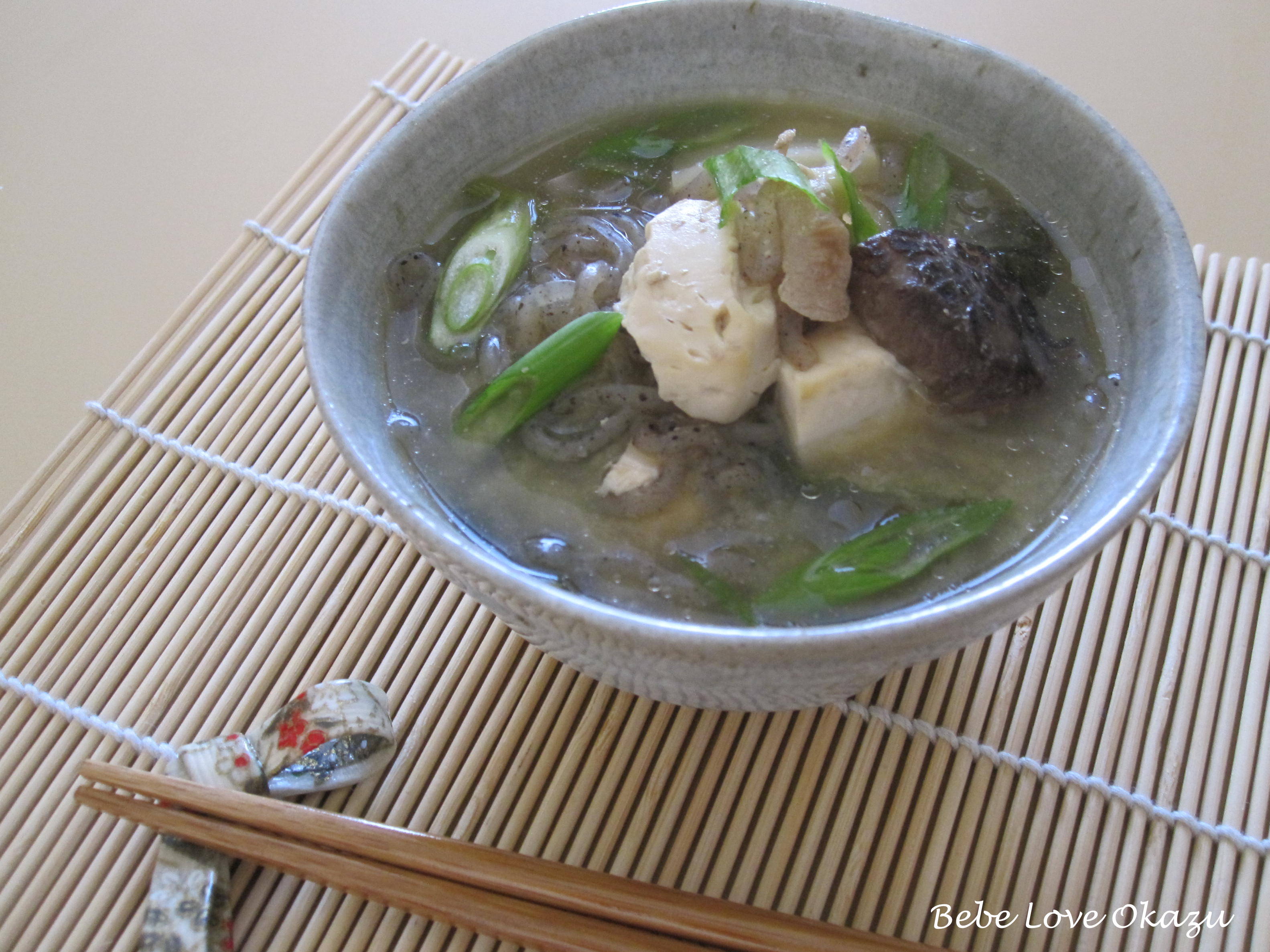Dote-Nabe (Miso Hot Pot)
We’ve been experiencing bipolar weather in Southern California. One day it’s warm and sunny, with hints of summer just around the corner. The next day it’s cloudy and cold with Spring showers and hail. A mere 40-mile drive also makes a big difference in our weather. When I left Orange County this past weekend, it was warm and sunny, but when I arrived in Santa Monica, it was overcast, I needed a sweater and the next morning it was sprinkling and the ground was damp.
Not long ago, over one of our cold weekends, I made buta shabu-shabu, which is a Japanese hot pot made with pork, tofu, napa cabbage, spinach, shiitake mushrooms and ito konnyaku. To some, shabu-shabu might seem like an elaborate dinner, but in reality, it is one of the EASIEST and quickest meals to prepare, and I love me a quick-n-easy-dinner! Now I understand why my Mom often made shabu-shabu for us when we were growing up. :)
Usually, if I make shabu-shabu one night, we’ll eat shabu-shabu a second night with our leftover meat and vegetables. This time, however, we didn’t have a significant amount of leftovers, so I decided to make a secondary dish from our shabu-shabu, called dote-nabe.
Dote-nabe is yet another form of Japanese hot pot, and there are quite a few variations of this across Japan, dependent upon the region of the country. I have vague memories of my Mom making dote-nabe for us with our shabu-shabu leftovers, but it wasn’t often.
Our dote-nabe broth was full of delicate flavors from the pork, shiitake and napa cabbage and melded well with the savory white miso and sake. This hearty Japanese soup is a nice alternative to the traditional miso shiru (miso soup recipe here) I usually serve with dinner.
… Looking forward to consistent warm and sunny days! I’m ready to put my scarf away, but until then, we’ll be enjoying Winter dishes in the Spring.
Cheers,
Judy
- Leftover pork shabu-shabu, with broth reserved (see above recipe link)
- Miso paste, to taste (I use about ¼ to ½ cup)
- 2 tablespoons cooking sake
- Dried bonito dashi powder (optional)
- Negi (green onions), sliced on the diagonal for garnish
- Shichimi togarashi (fine red chili pepper) for garnish
- This recipe for miso dote-nabe is best when made with leftover shabu-shabu because the broth from the shabu-shabu hot pot will have many layers of flavor. The broth refers to the liquid in which the shabu-shabu hot pot is cooked.
- NOTE: When I have leftover shabu-shabu, I typically leave all the contents of the shabu-shabu in the
- nabe (hot pot) and place the entire nabe in the refrigerator. When I'm ready to warm-up our leftovers, or make dote-nabe, I just make it in the same pot using the same broth. Easy clean-up!
- Depending upon how much broth you have leftover, you might need to add water first, and then add anywhere from 2 tablespoons to a ¼ cup of miso paste. Please add miso paste to suite your palate.
- TIP: When adding miso, I use a large ladle to hold the miso paste to which I add a bit of broth and gently dissolve by mixing the paste with my chopsticks, inside the ladle. I continue to add broth to the ladle until the miso paste has dissolved. If you place all of the miso paste into the hot pot, there's a chance you will end-up with an undissolved clump of miso.
- After the miso broth is boiling, add cooking sake and cook for about 5 minutes. If you are making your dote-nabe from leftover shabu-shabu, your broth should already have significant flavors from the pork, vegetables and the konbu-dashi (dried kelp) used to make the original broth for your hot pot.
- If you are making your dote-nabe from scratch, and you are not using leftover shabu-shabu, the miso broth will likely lack umami, and you might want to consider adding dried bonito dashi powder (MSG - free) to your broth. One small packet should suffice.
- Serve immediately in small soup bowls, garnish with
- negi (green onions) and if you like a touch of heat, garnish with
- shichimi togarashi (fine chili flakes). Enjoy!




2 Comments